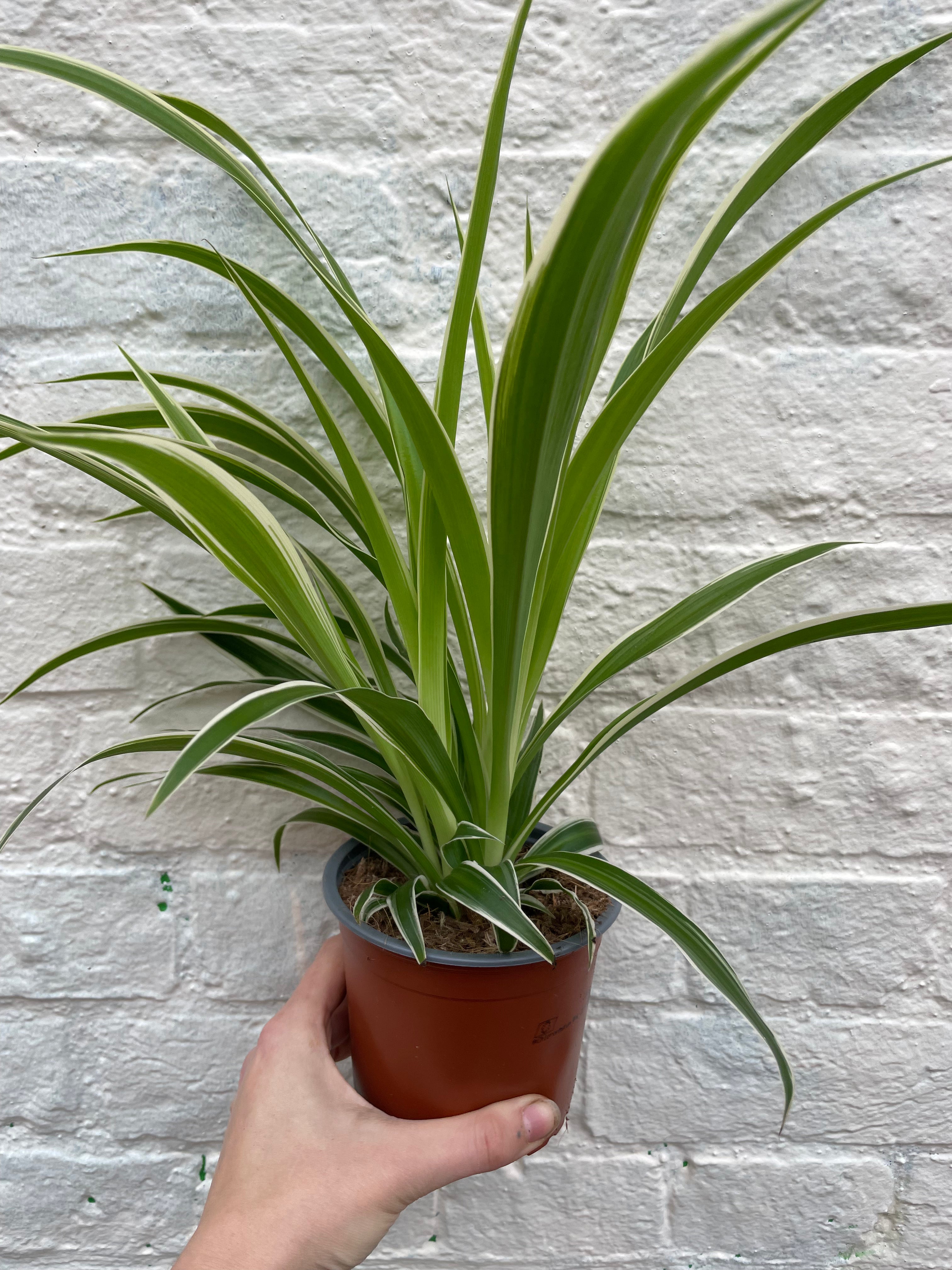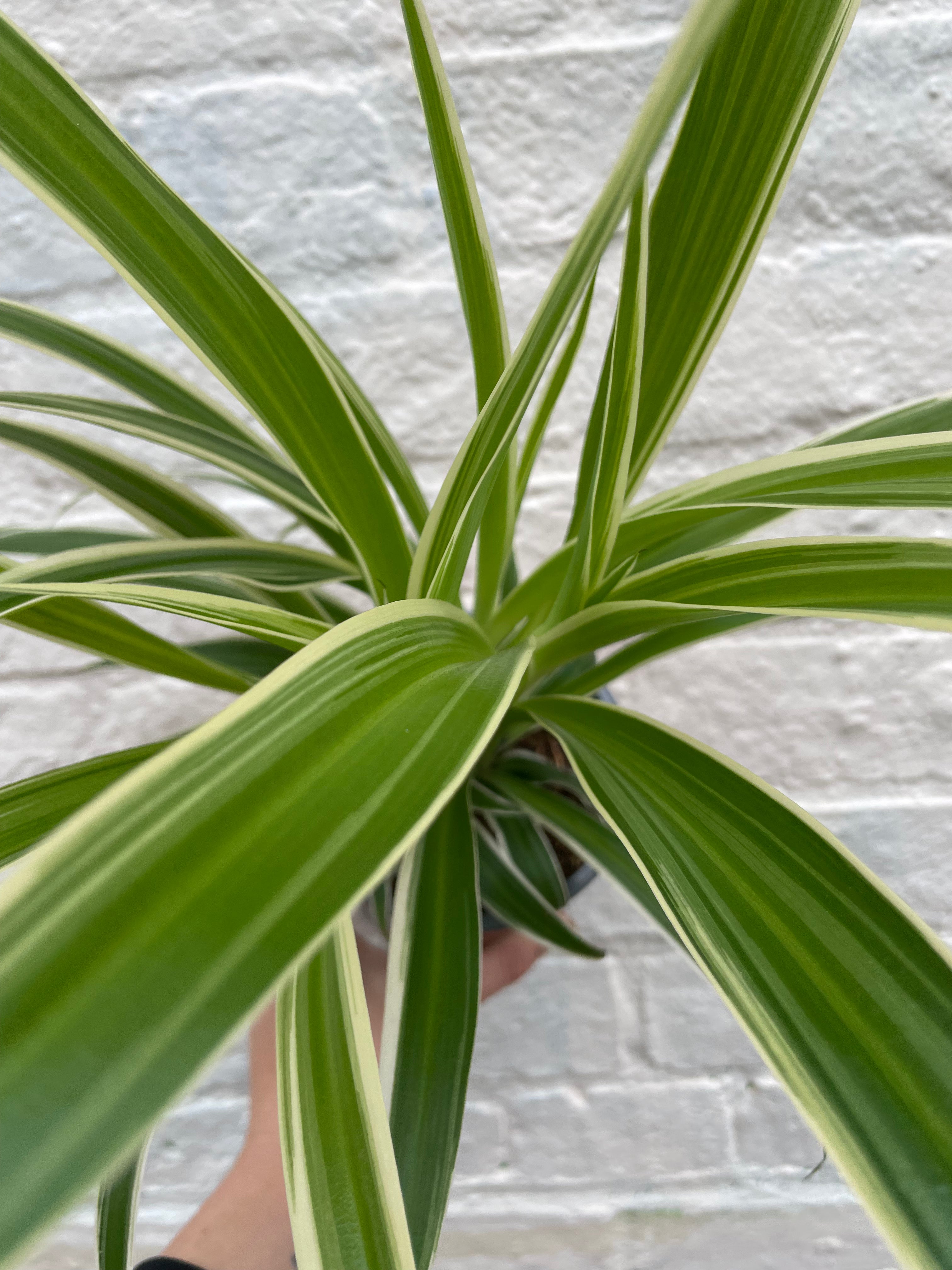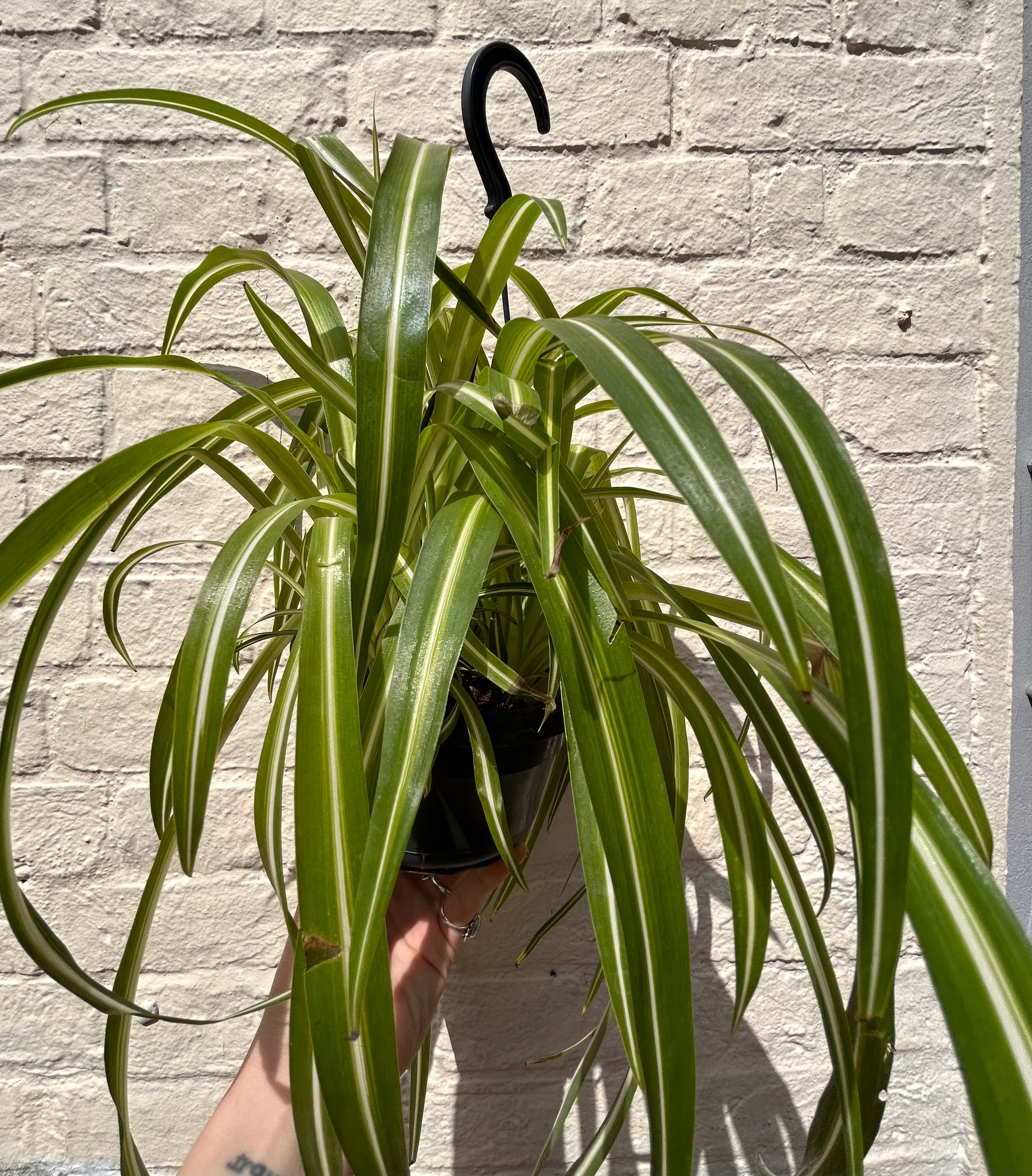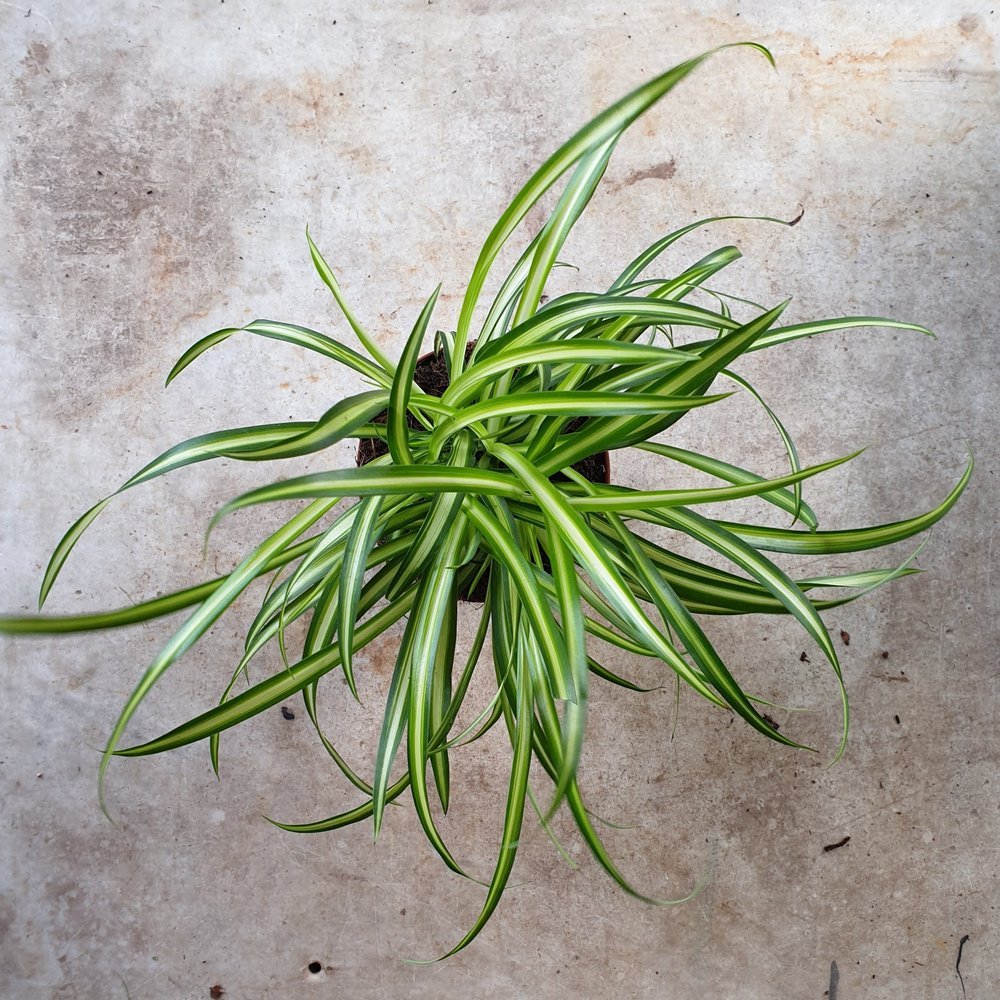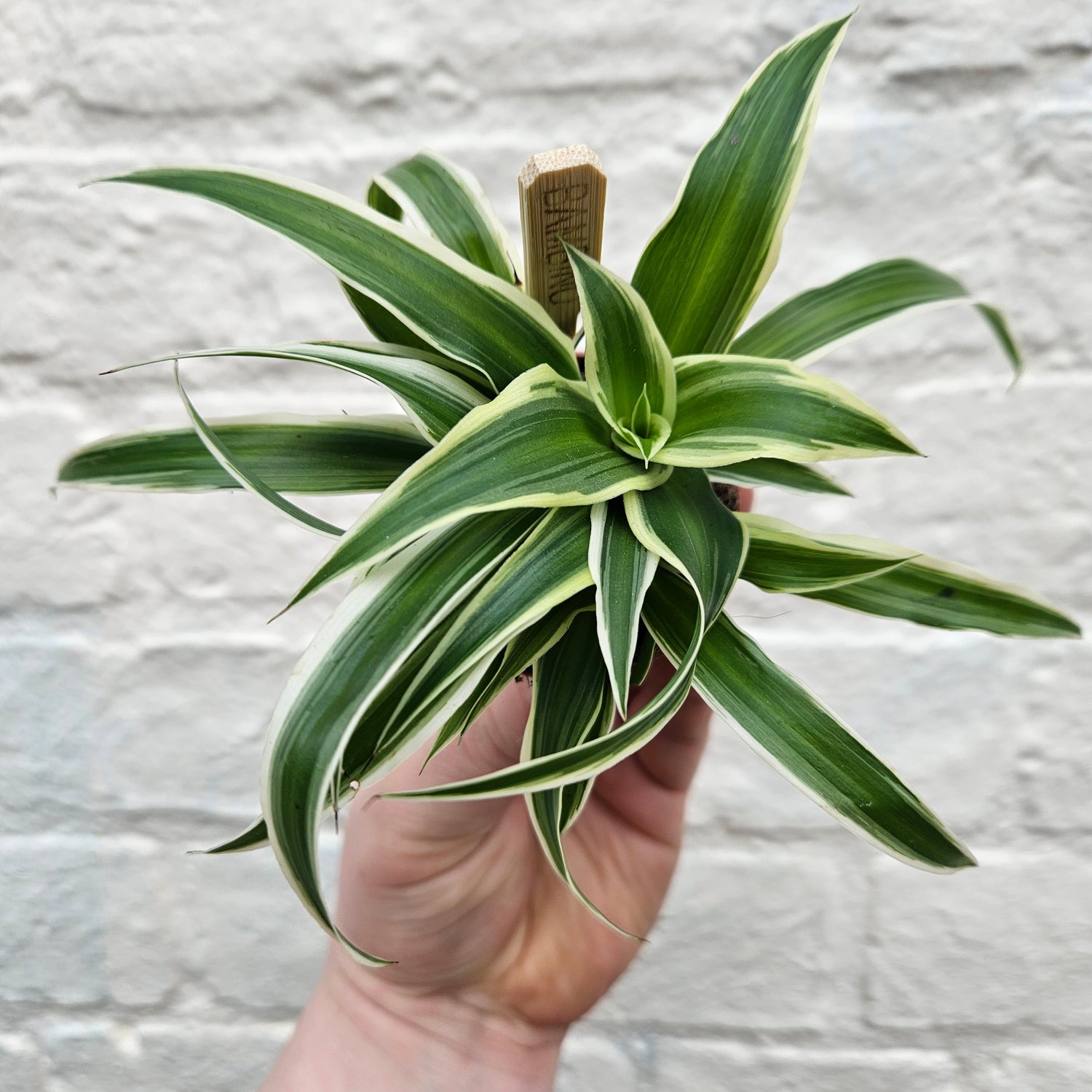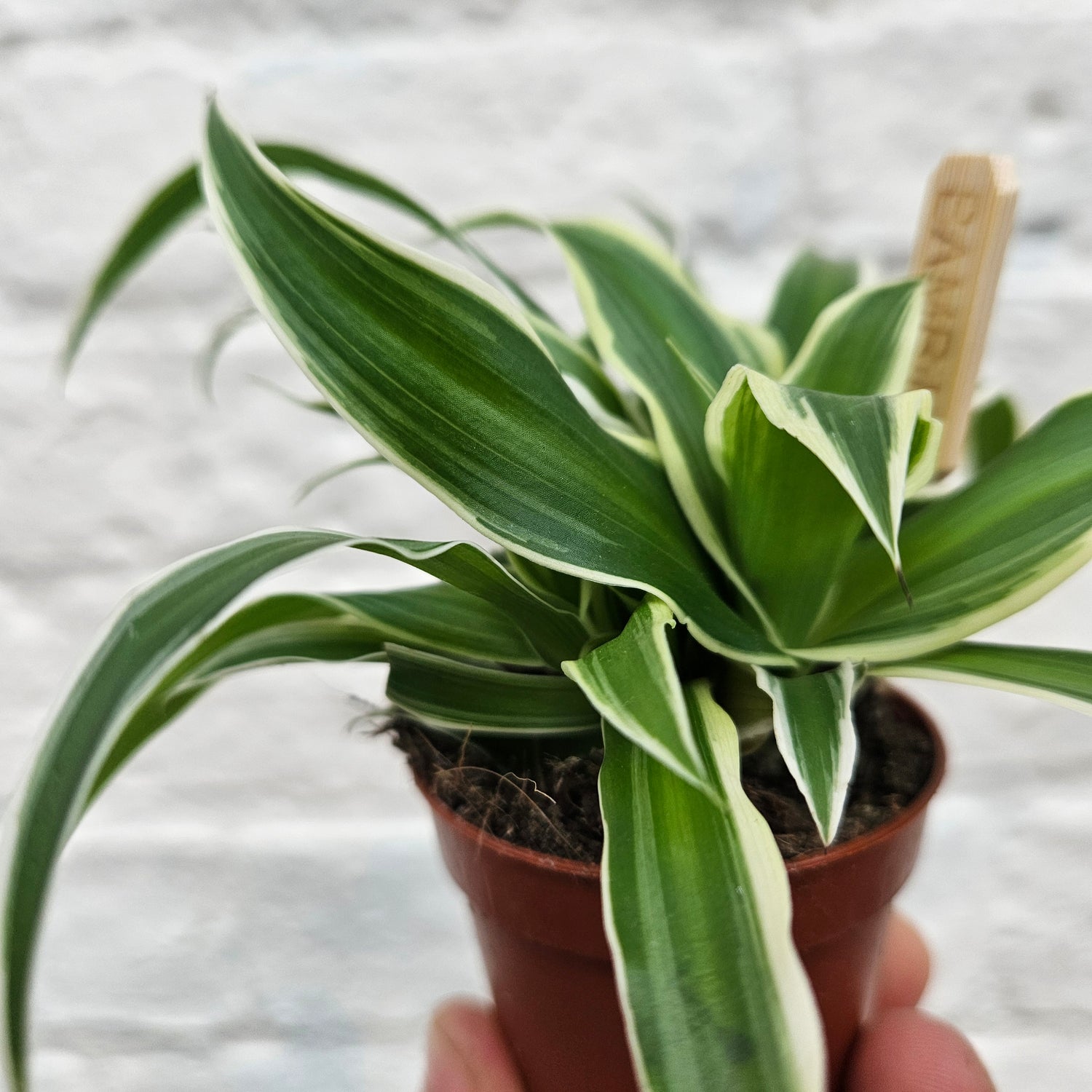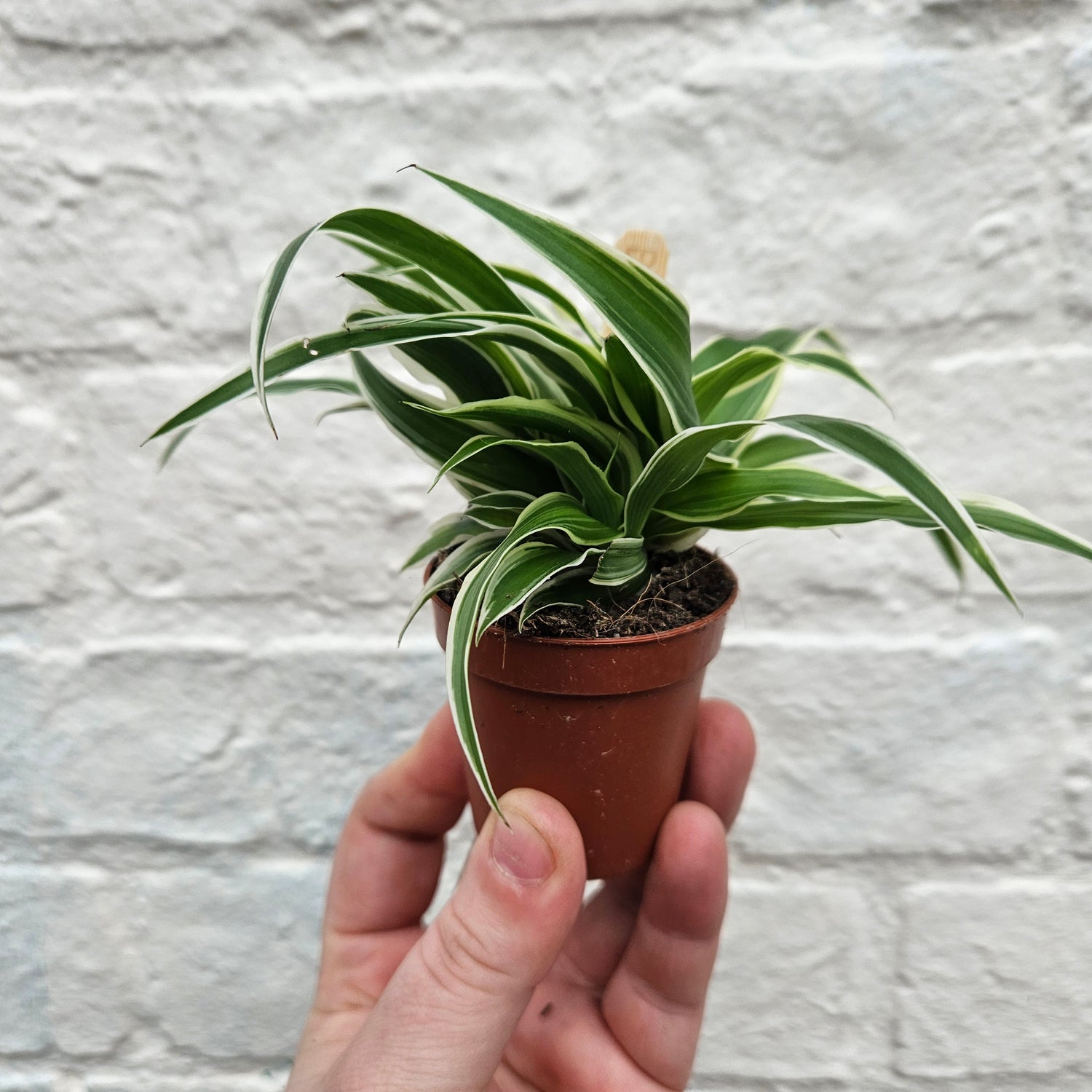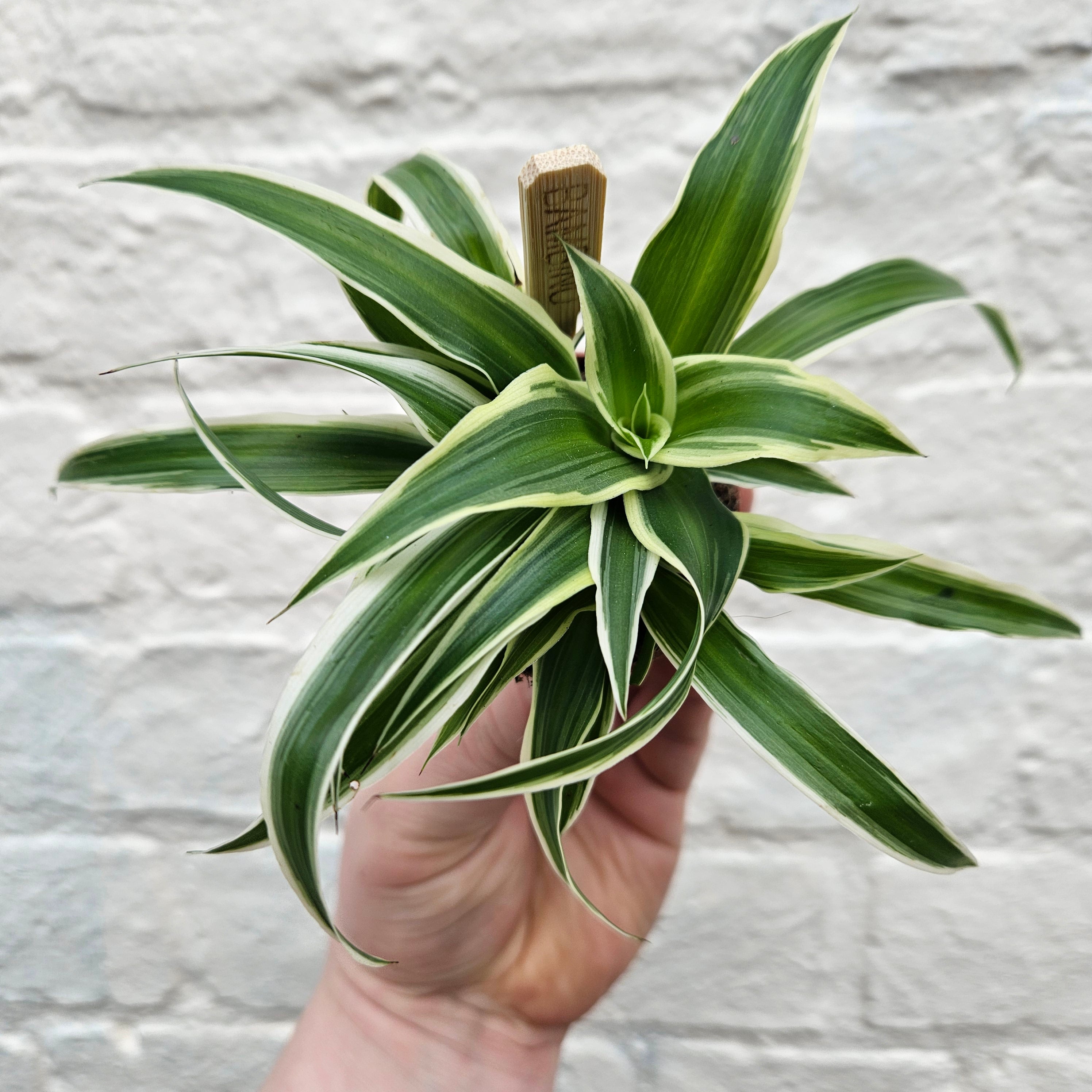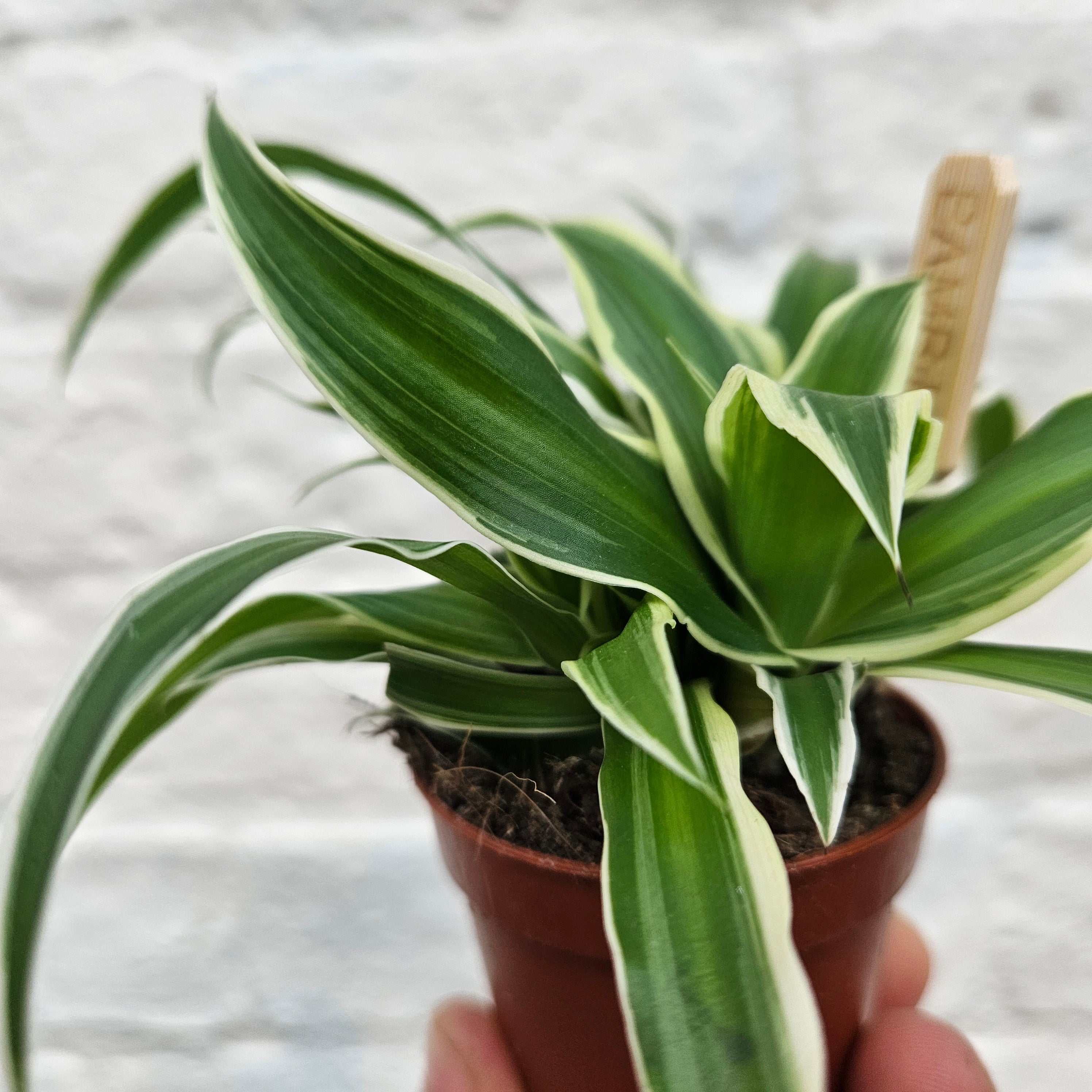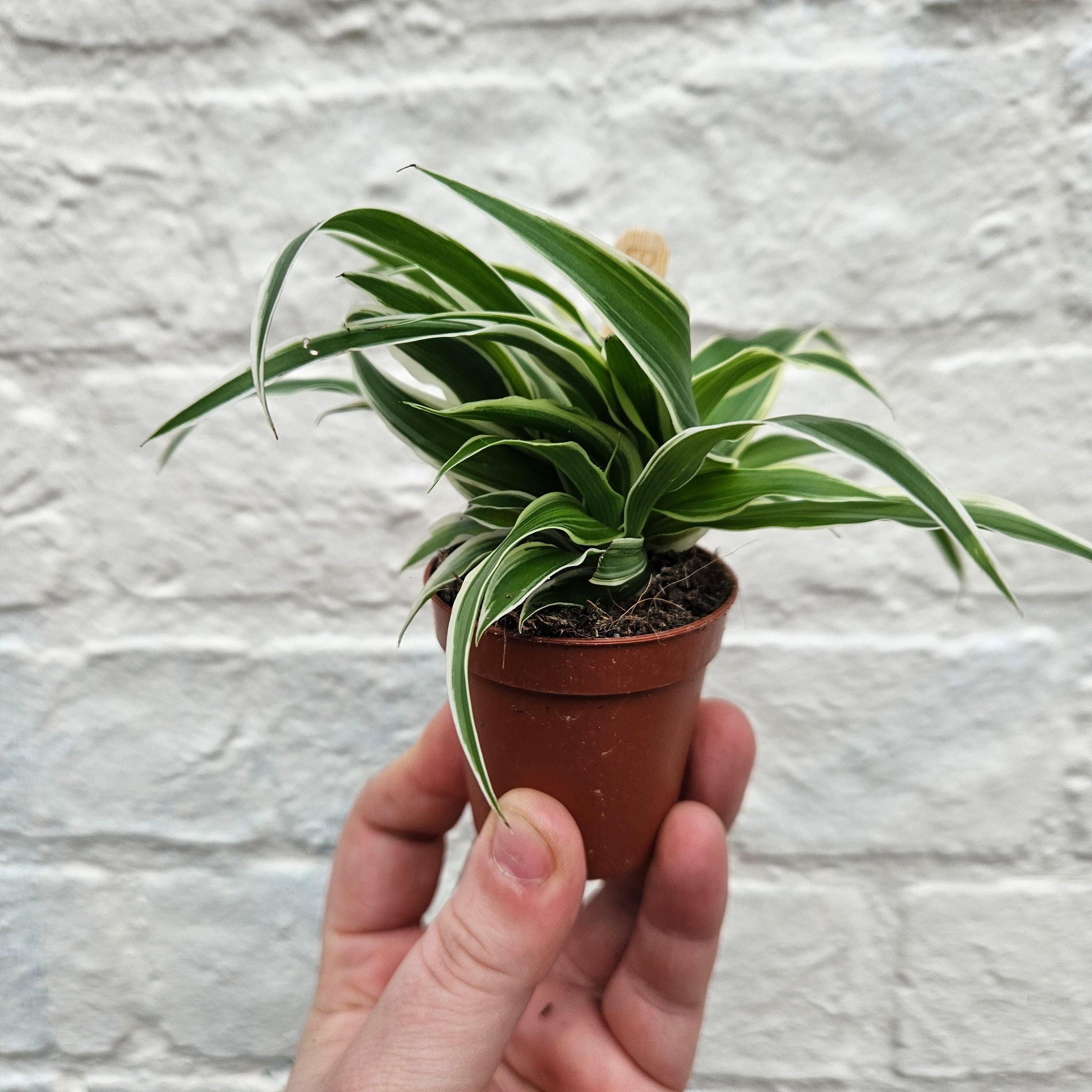Spider Plant Overview
Welcome to the world of spider plants, where graceful arching leaves and air-purifying qualities make them a beloved addition to any indoor space. Spider plants, scientifically known as Chlorophytum comosum, are popular for their adaptability and low-maintenance requirements, making them an excellent choice for both beginner and experienced plant enthusiasts.
Check out our full range of Air Purifying Houseplants from Between Two Thorns.

Chlophytum cosmosum have been kept as houseplants for over 200 years, becoming a very popular choice for plant keepers. Not only are they fast growing, they are easy to care for. Native to South Africa, and introduced to Europe in the late 18th Century by Carl Peter Thunburg, a student of Carl Linnaeus. The spider plant was reclassified several times before being placed in the Chlorophytum genus in 1862. In 1989 it was one of the plants included in NASAs Clean Air study.
How to Care for a Spider Plant
Spider plants are relatively easy to care for, but a little attention goes a long way in ensuring their health and vitality.
-
Light: Spider plants thrive in bright, indirect light. Avoid exposing them to direct sunlight, which can scorch their leaves. They can tolerate lower light conditions, but their growth may slow down.
-
Watering: Allow the top two inches of the soil to dry out before watering. Water thoroughly, ensuring water drains from the bottom of the pot. Overwatering can lead to root rot.
-
Humidity: Spider plants appreciate higher humidity, but they can adapt to typical indoor humidity levels. If you notice brown tips on the leaves, it could be a sign that the air is too dry.
-
Temperature: Spider plants prefer average room temperatures 15-24°C. They can handle slightly cooler temperatures at night. Try to not let them get too cold during winter.
-
Fertilization: During the growing season (spring and summer), feed your spider plant with a balanced, water-soluble fertilizer every 2-4 weeks.
How to Re-pot a Spider Plant
Repotting is necessary when the plant becomes root-bound or outgrows its current container. Repot when rootbound. You can also individually plant up the plantlets (babies) separately from the mother plant.
-
Choose a slightly larger pot with drainage holes. 1-2cm larger in diameter is ideal.
-
Gently remove the plant from its current pot, being mindful of the roots.
-
Place a layer of fresh potting mix in the new pot.
-
Position the spider plant and fill in with more potting mix, ensuring the plant sits at the same depth as before.
-
Water thoroughly after repotting.
How to Propagate a Spider Plant
Spider plants are known for their pups, or baby plants, that can be propagated easily.
-
Locate the pups with roots at the base of the parent plant or from a runner (long, thin stems that will produce flowers first)
-
Carefully separate the pup from the parent using clean scissors or your hands.
-
Plant the pup in a small pot with well-draining soil.
-
Keep the soil consistently moist until the pup establishes roots and begins to grow.
We also have a wide range of Low Maintenance Indoor Plants for you to choose from.
How Often Should You Water a Spider Plant
Watering frequency depends on factors like humidity, temperature, and pot size. Generally, water your spider plant every 1-2 weeks. Stick your finger into the soil; if the top two inches feel dry, it's time to water.
How to Prune a Spider Plant
Pruning is mostly about maintaining the plant's appearance and removing any browning or yellowing leaves. Trim leaves at the base using clean scissors or pruning shears.
Best Soil for a Spider Plant
Use a well-draining potting mix. A mixture of houseplant soil, perlite, and vermiculite works well. You can also add a bit of sand for extra drainage.
Sunlight for Spider Plants
Spider plants prefer bright, indirect light. Avoid direct sunlight, as it can scorch their leaves. They can tolerate lower light conditions, but their growth may slow down.
Why Is My Spider Plant Turning Brown
Brown tips can be caused by low humidity, underwatering, or fluoride in tap water. Maintain proper humidity or adjust your watering routine.
How to Stop Spider Plant From Dying
Ensure you're meeting their basic needs: proper light, watering, and humidity. Check for signs of pests or diseases. Adjust your care routine accordingly.
Are Spider Plants Toxic to Pets
Spider plants are considered non-toxic to cats, dogs, and most other pets. However, some pets may be curious and chew on the leaves, which can lead to mild gastrointestinal discomfort. Keep an eye on your pets' interactions with the plant. If they show interest, consider placing the plant out of their reach.
With these tips in mind, you're well-equipped to care for your spider plant and enjoy its beauty and air-purifying benefits for years to come. Happy planting!






